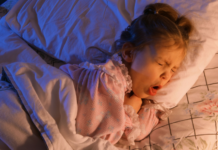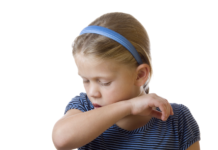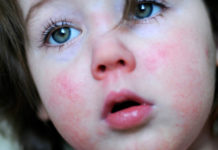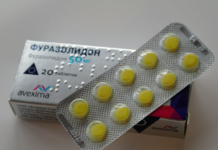Chicken pox is a childhood disease that affects mainly children from 3 to 10 years old. Due to the fact that chickenpox spreads through the air over long distances, the infection spreads quickly in groups. In addition, the contagiousness (infectiousness) of smallpox is almost 100%, which means that every person who has contacted a patient and has never been sick before will get infected. For this reason, it is important to isolate a sick child as soon as possible, which means that every mother should know the first symptoms of chickenpox and its treatment in children.
Material Content:
- 1 Chickenpox in children: causes
- 2 What does chickenpox look like?
- 3 Incubation period
- 4 How does chickenpox begin?
- 5 Symptoms and signs of the disease
- 6 Diagnostic measures
- 7 Treatment of chickenpox in children
- 8 Possible complications and consequences
- 9 Chickenpox vaccination for children: feasibility
- 10 Disease prevention
Chickenpox in children: causes
The reason for the development of the disease under discussion is one - the penetration into the body of a previously not sick person of a virus that belongs to the herpes family.

Chicken pox has an unusually high percentage of contagiousness, more than 80% of the world's population have been ill with it since childhood.
Typically, a child becomes infected in a preschool or, in extreme cases, while studying in primary school. The source of the virus is an infected person. The patient becomes contagious a couple of days before the first signs of chickenpox occur, and ceases to pose a threat to healthy people only a week after the first elements of the rash appear.
In ill children, specific immunity is formed, which does not allow a relapse of the disease even after the pathogen re-enters the body.However, individual viral cells persist in the nerve fibers of the body and can sleep there for many years. After a certain period of time, under the influence of factors favorable to them (stress, decreased immunity, re-infection), the virus activates and provokes the appearance of pathology, but not chickenpox, but herpes zoster.
What does chickenpox look like?
For the disease, a symptom such as rash polymorphism is characteristic. This means that on the patient's body there are various types of rashes - spots, papules, vesicles, sores. This is due to the fact that dermatological defects do not appear simultaneously, but gradually cover the entire body, periodically adding fresh elements.
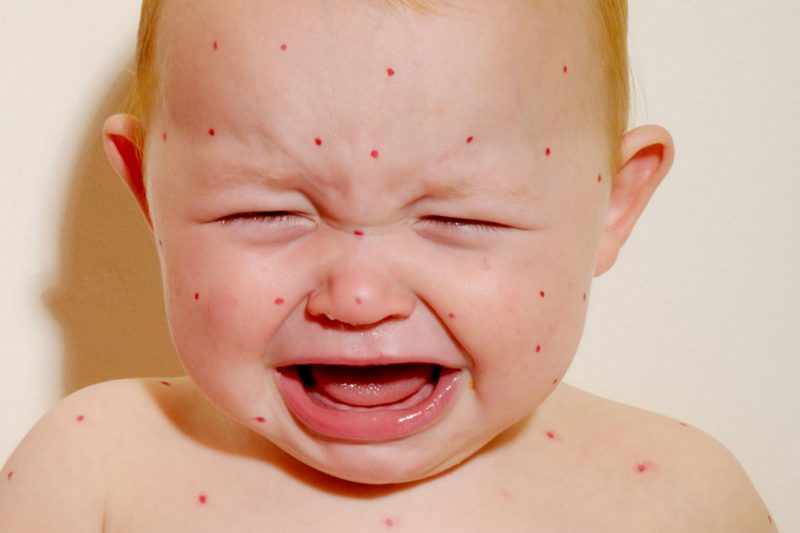
Wind rash goes through several stages of development until it disappears completely.
- Spot. Local redness of the skin, which is formed due to the expansion of capillaries that occurs under the influence of the virus. Its diameter usually does not exceed several mm.
- Papule. The second stage, which begins a few hours after the spot appears. Small swellings that resemble mosquito bites are visible on the skin.
- Vesicle. Due to the detachment of the epidermis, the papules begin to turn into vesicles filled with a clear liquid. In severe forms of smallpox, vesicles can be filled with blood or pus. They gradually dry out or burst, and thus the elements proceed to the next stage.
- Sores and crusts. Sores appear at the site of the damaged bladder and quickly become crusty, which soon disappear. Outwardly, they resemble small wounds in the healing stage.
The rash spreads throughout the body, causing significant discomfort and itching.
It is important to ensure that the child does not comb the elements, otherwise noticeable scars may remain in their place.
Accelerate healing and shorten the period of scabies by lubricating defects on the skin with a solution of brilliant green. It dries bubbles, stimulates regeneration and prevents bacterial infection.
Incubation period
One of the features of the disease under discussion is a long incubation period, which in some cases can last up to three weeks. However, on average, its duration is 10-14 days, and with weakened immunity it is reduced to one week.
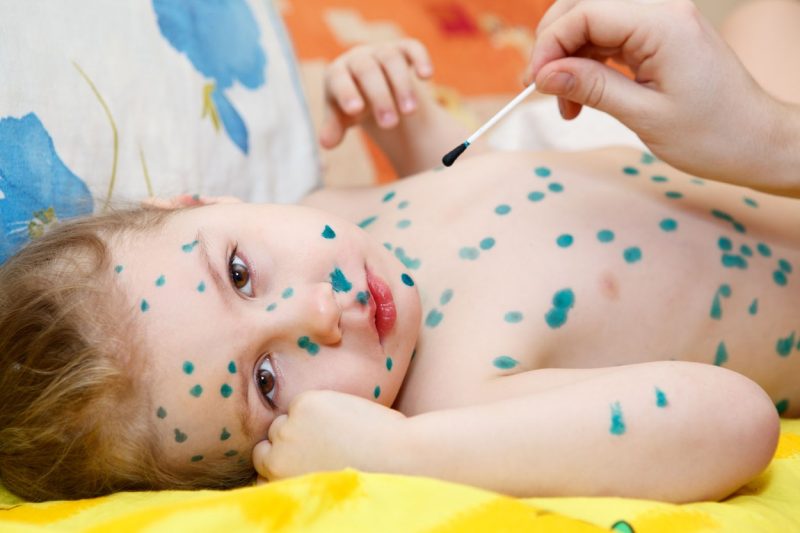
The causative agent of the disease enters the body through the respiratory tract, which is why it is there that it is initially fixed. The virus invades the mucous membranes of the upper sections (nose, nasopharynx), adapts to them and proceeds to active reproduction. During almost the entire latent period, the child is not contagious, and only a few days before the onset of specific signs, he begins to release chickenpox pathogens into the air.
Over time, there are so many viral cells that the local immunity of the mucous membranes can no longer restrain them and therefore they seep into the bloodstream of the diseased. The general immune system responds to the penetration of foreign particles and the prodromal period begins.
How does chickenpox begin?
The first symptoms of chickenpox appear 7-14 days after contact with the patient, but in some cases the incubation period can last 21 days.
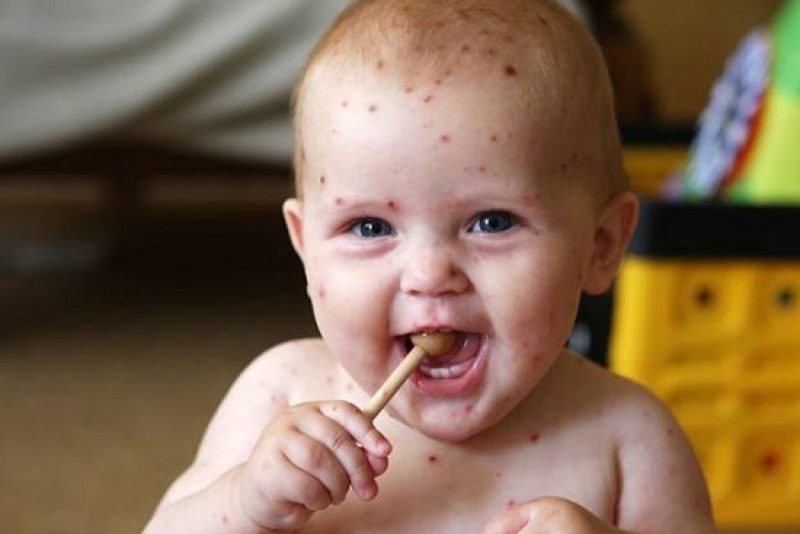
Initially, smallpox resembles a common cold or flu:
- weakness, fatigue appears;
- appetite worsens or completely disappears;
- the temperature reaches high values (39-40 ° C);
- body aches may appear.
Symptoms and signs of the disease
After 2-3 days of signs of the prodromal period, rashes characteristic of chickenpox appear. First, small pink spots form, which then turn into bubbles filled with liquid. Depending on the form of chickenpox, the rashes can be filled with blood, pus or serous secretions. Most often, the last option occurs, and the first two speak of a severe course of the disease. After a few days, the bubbles burst and overgrow with crusts, which soon disappear without a trace.
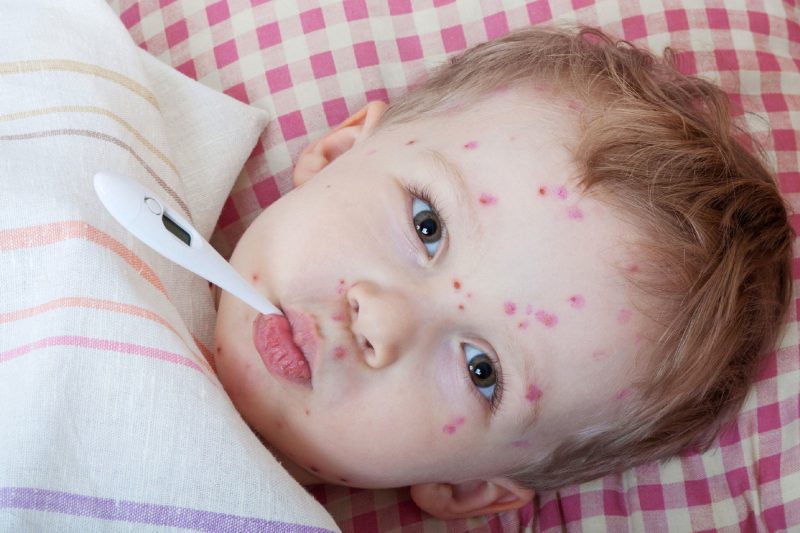
Do not peel off the crusts prematurely, because in this case they will leave behind ugly scars.
The period of rashes is accompanied by severe itching of the skin, so you need to make sure that children do not comb the elements of the rash. In addition, sometimes papules can occur on the mucous membranes - in the mouth, on the vulva in girls or on the glans penis in boys. Unlike bubbles on the skin, they will not crust.
New elements of the rash appear within a few days, so when examined, pink spots, bubbles, and crusts can be observed simultaneously. The intensity of the rash depends on how many days the chickenpox will last and how long the patient will be infected. Usually, a child becomes safe for society 1-2 days after smallpox ceases to appear.
Diagnostic measures
Chickenpox has a characteristic clinical picture, so it is not necessary to be a medical professional to figure out the nature of the disease. To make a diagnosis, it is enough to collect an anamnesis and examine the child. In addition, it is important to identify people who have been in contact with the patient for the past few days, and to warn them about the possibility of infection.
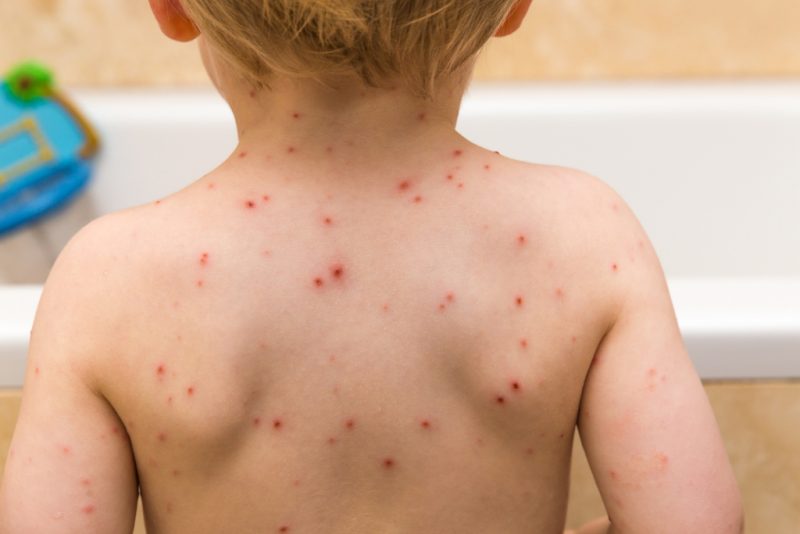
Treatment of chickenpox in children
You can be treated for chickenpox at home, since in most children the disease is mild. Only complex cases require hospitalization and constant medical supervision.
Drug therapy
From the first days of the disease, you need to actively deal with the unpleasant symptoms that exhaust the child.
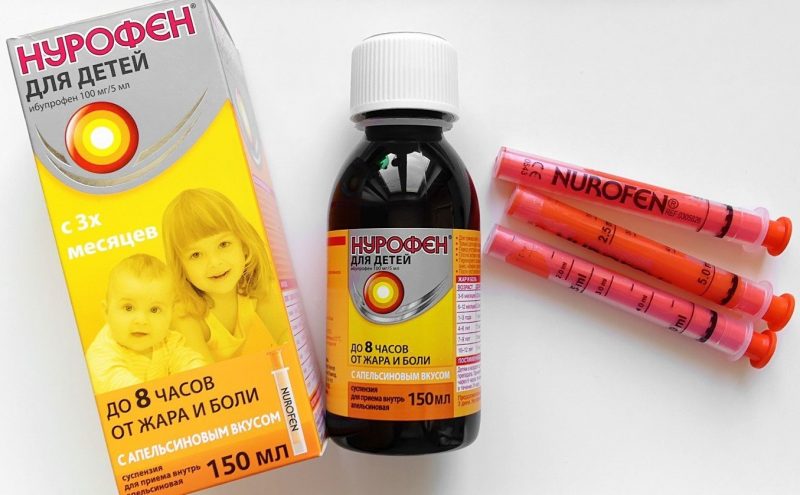
For this purpose, use the following groups of drugs:
- antipyretic (Nurofen, Aspirin, Paracetamol) - reduce body temperature, but you should not use them if the values on the thermometer do not rise above 38.5 ° C;
- antihistamines (Suprastin, Diazolin) - relieve itching, which begins to bother with the appearance of rashes;
- antiviral (Acyclovir, Zovirax) - directly affect the causative agent of the disease, improving the overall well-being of the child and bringing closer the moment of recovery.
It is strongly not recommended to self-medicate and prescribe treatment for your child yourself, since such actions can lead to negative consequences.
Folk remedies
Traditional medicine is not able to cure the disease, but with its help it is possible to increase the level of immunity and weaken the causative agent of chickenpox. For this purpose, patients are advised to eat fresh blueberries and raspberries, eat nuts. It is also useful to add honey to the diet during this period.

A good anti-inflammatory and restorative effect has a mummy. With chickenpox, you need to dissolve 0.1 g of the substance in 100 ml of warm water. Drink the solution every morning before eating until complete recovery.
To relieve itching, you can take baths with various additives:
- Brew 50 g of dried flowers of celandine in one liter of water, strain and add the solution to the bath;
- 100 g of dry yarrow pour 2.5 liters of boiling water, insist for 3-4 hours, and then strain and pour into bathing water;
- Pour 100 g of soda into the bath and stir until completely dissolved.
Hygiene rules
To care for the skin and mucous membranes, ointments and solutions are used, but most often the usual brilliant green.
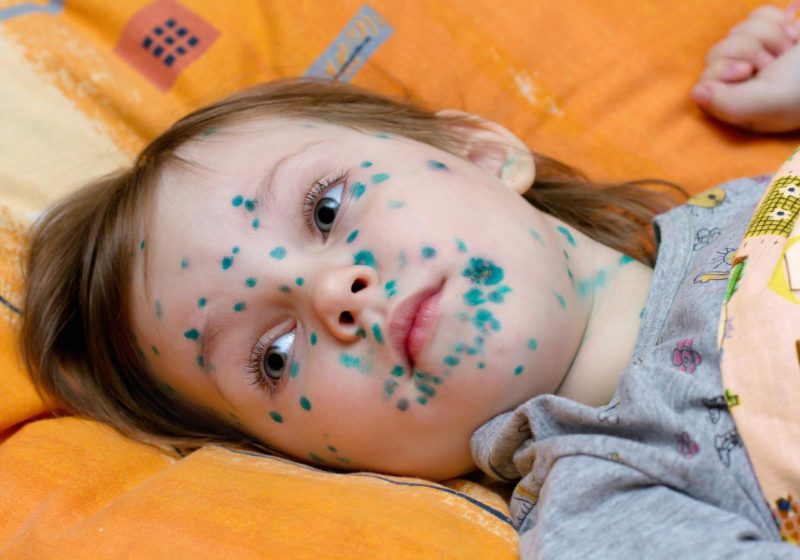
Since the patient may have a different rash, it is important to know how to smear each element of chickenpox:
- spots do not require any maintenance;
- bubbles are smeared with brilliant green;
- crusts need to be processed only if the patient tore off a hard ball.
Special attention should be paid to the rash on the mucous membranes. Zelenka is too aggressive for them, so it’s better to use antiviral ointments or Fukartsin to treat such rashes.
You can bathe the patient 1-2 times a day. This will help relieve unpleasant sensations, but do not resort to water procedures in case of a significant increase in body temperature.
Possible complications and consequences
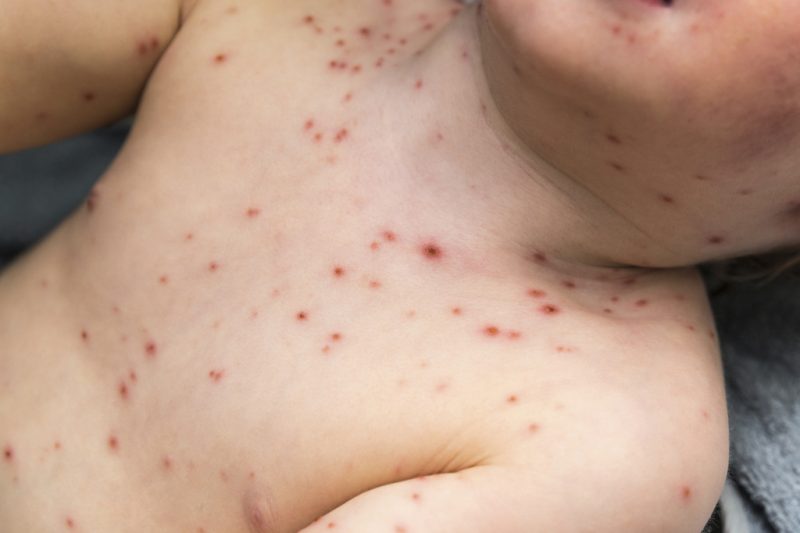
Chickenpox, transmitted in childhood, usually passes easily and quickly, but in rare cases it can provoke the appearance of complications:
- brain viral damage - encephalitis;
- sepsis;
- purulent inflammation in the skin due to the attachment of the bacterial flora;
- inflammation of the nerves - neuritis;
- Reye's disease.
To reduce the risk of complications, it is important to consult a doctor on time and clearly follow all his recommendations.
Chickenpox vaccination for children: feasibility
Scientists have long come up with specific prophylaxis for chickenpox, however, the feasibility of administering a vaccine has been challenged.
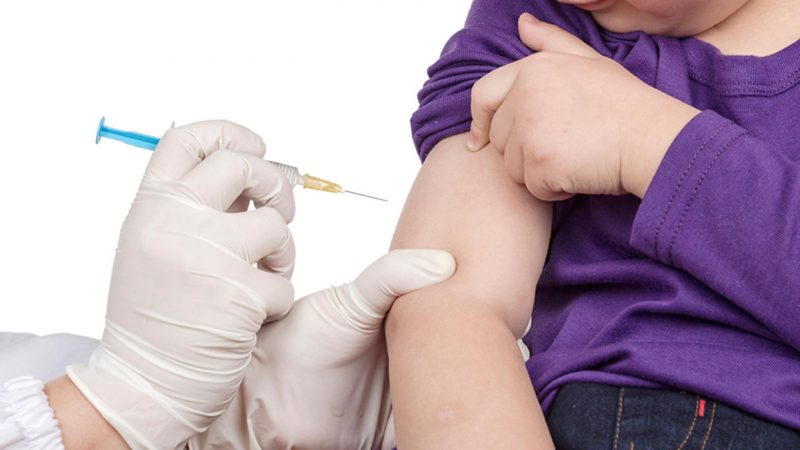
The controversial effectiveness of the chickenpox vaccine in children is associated with several factors:
- busy schedule of vaccinations - there is simply no place for the introduction of another vaccine;
- short-lived immunity - after the disease has passed, specific protection remains with the person for life, and the vaccine lasts only a few years;
- mild course of the disease in most cases.
Thus, vaccination is not mandatory, but those who wish can contact specialized clinics and get vaccinated against chicken pox.
Disease prevention
Prevention of the disease is to maintain immunity at the proper level. This is done by maintaining the right lifestyle, taking vitamin complexes, walking in the fresh air, tempering and other well-known measures.
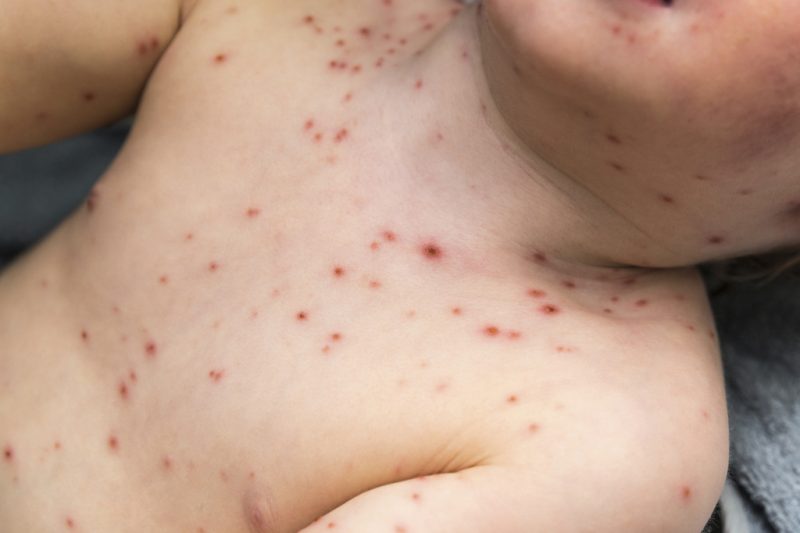
There is also specific prevention, shown to certain categories of people who simply cannot get chickenpox:
- HIV infected
- leukemia patients;
- pregnant girls 1-2 weeks before birth;
- people undergoing chemotherapy;
- patients who underwent organ transplantation.
In addition, specific prophylaxis is recommended for newborns whose weight is less than 1000 g, as well as for children who were born from mothers who never had chickenpox.
Chicken pox is an infection that is best tolerated in childhood, as it can cause many unpleasant complications in adults. It is easy for children to get chickenpox, and in some cases it goes away almost asymptomatically. The main thing is to isolate the child in time and begin effective treatment.




